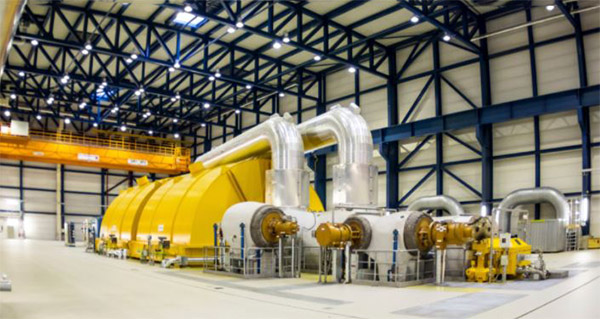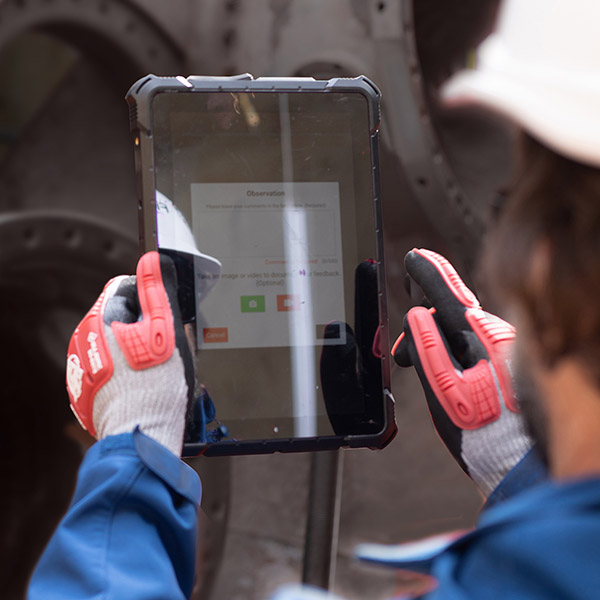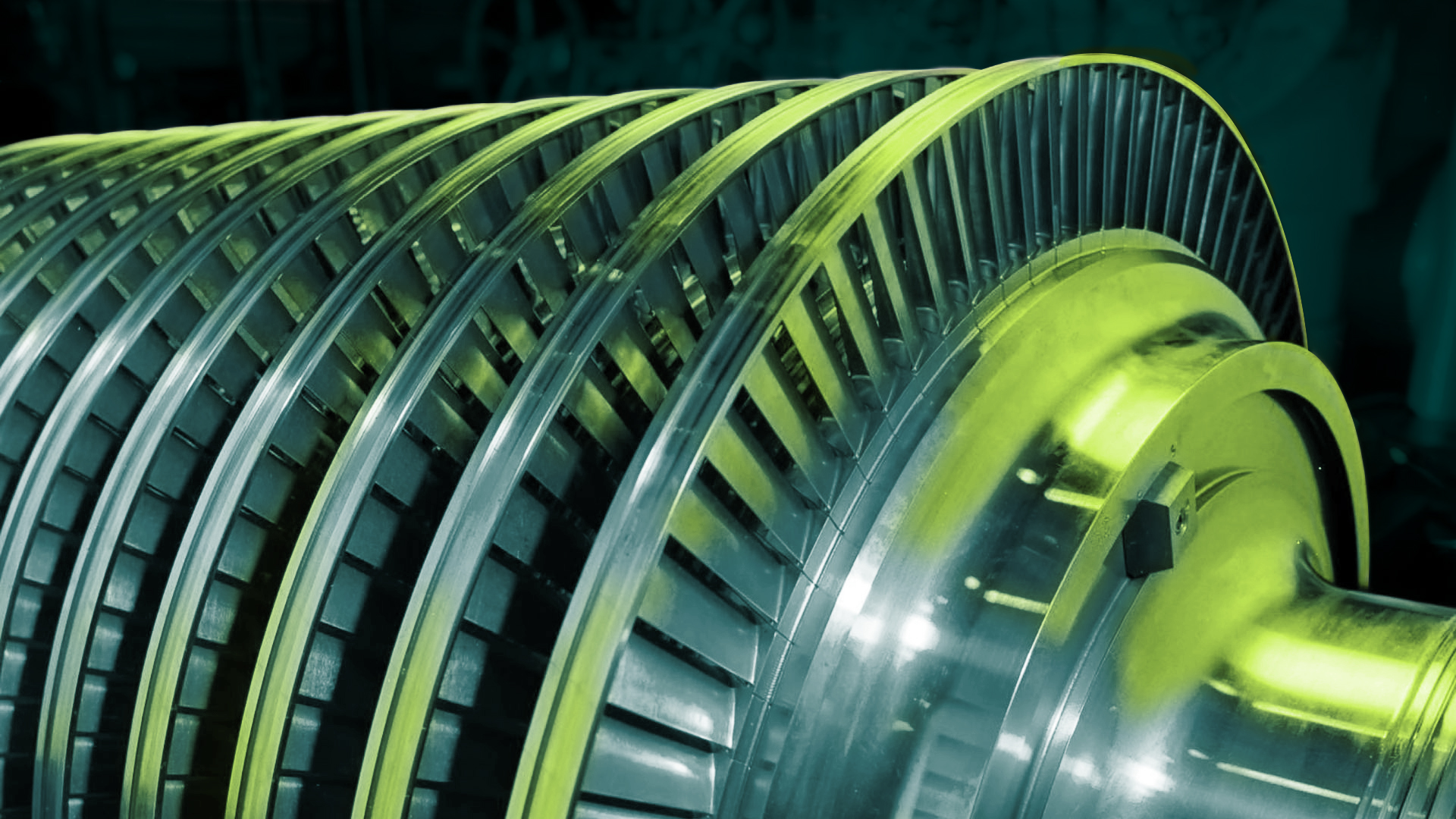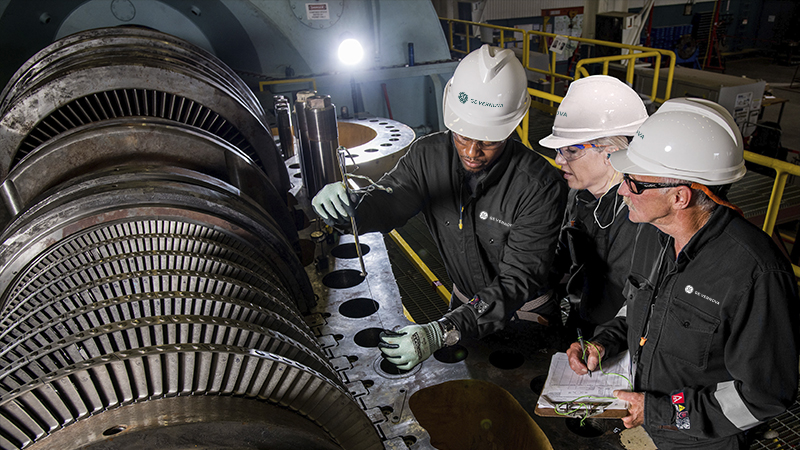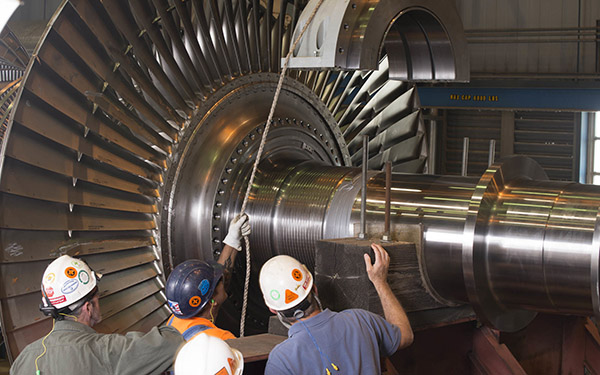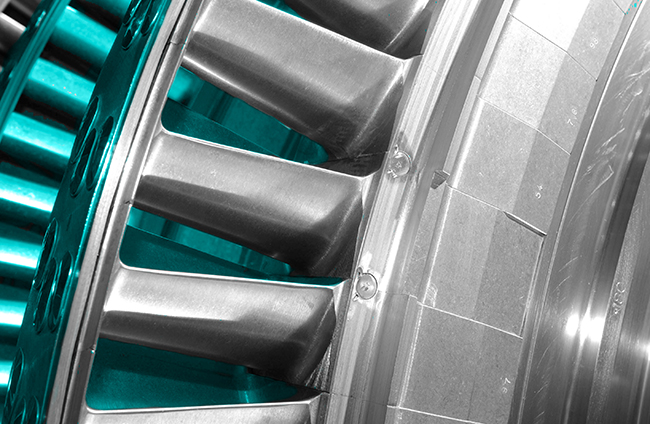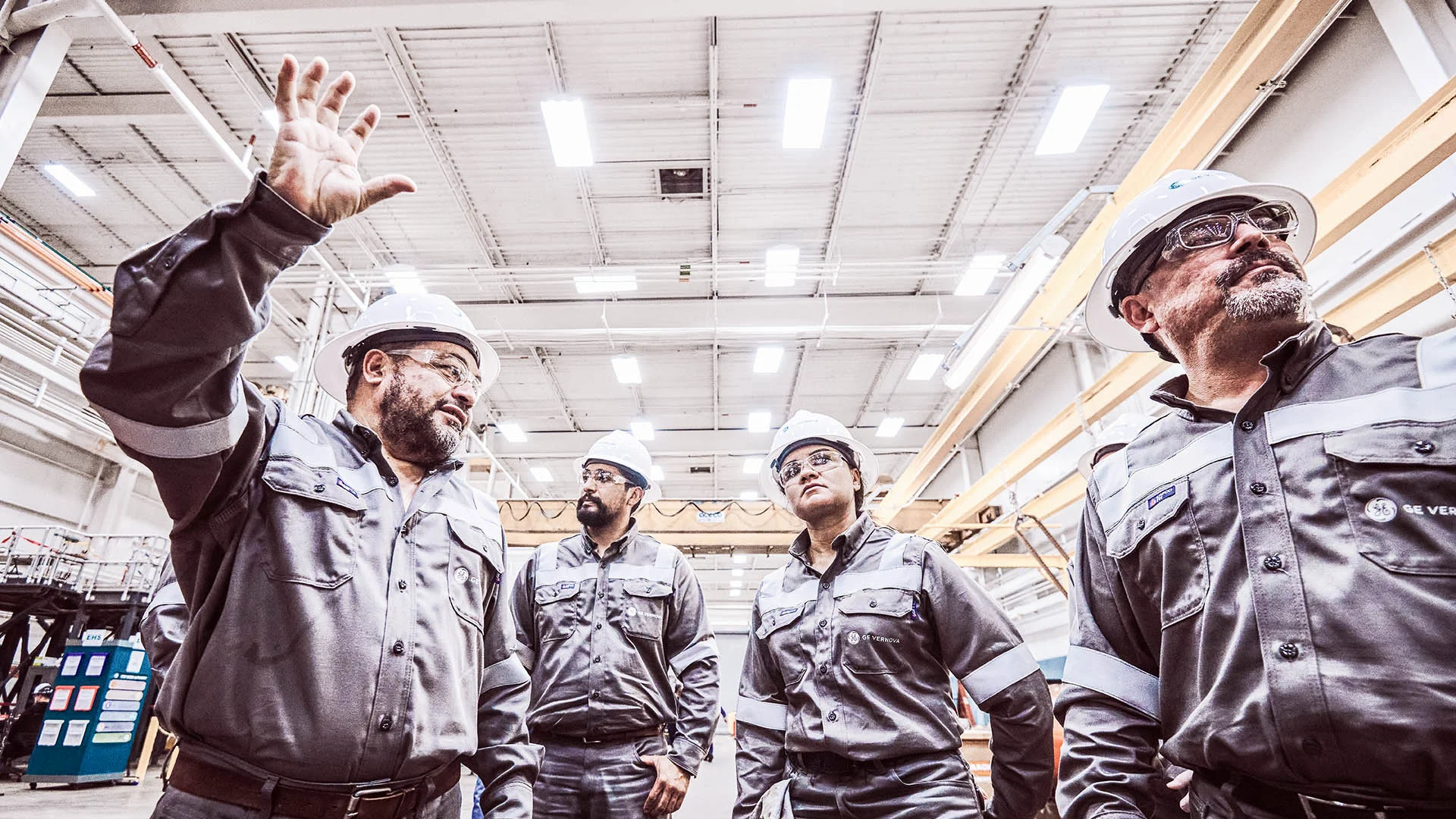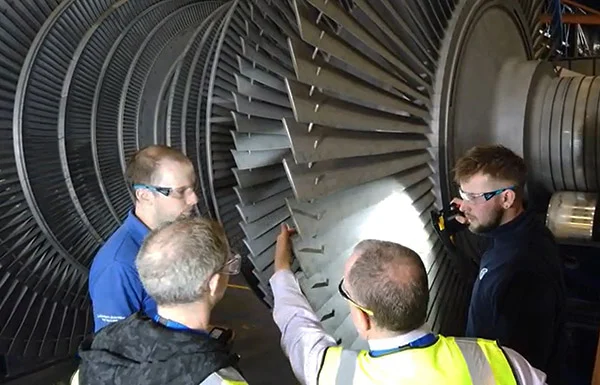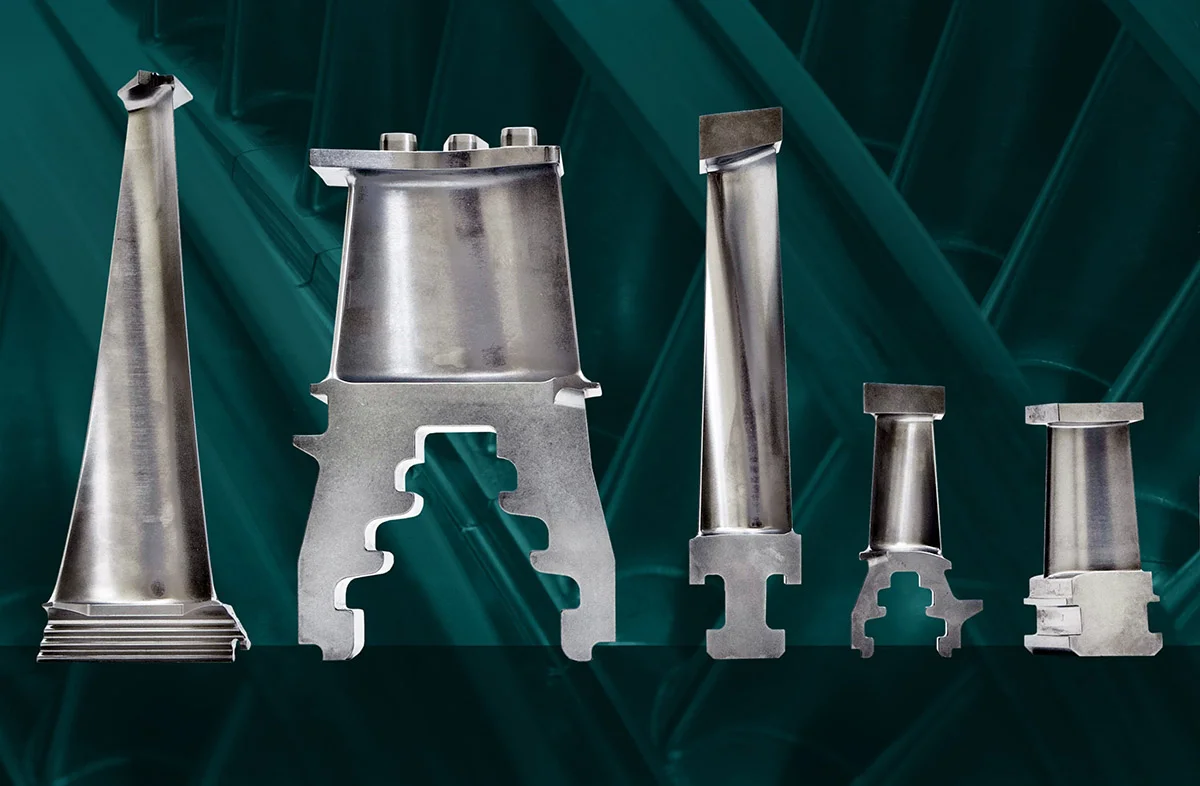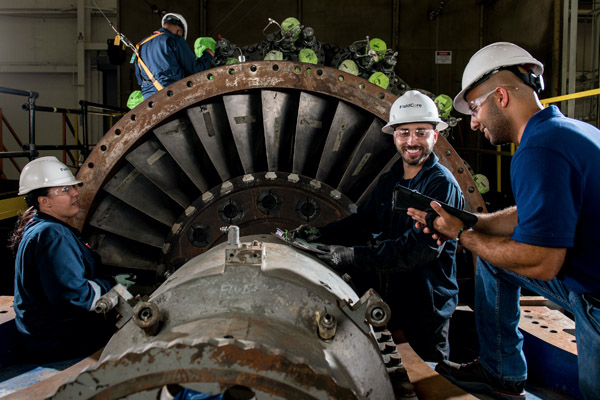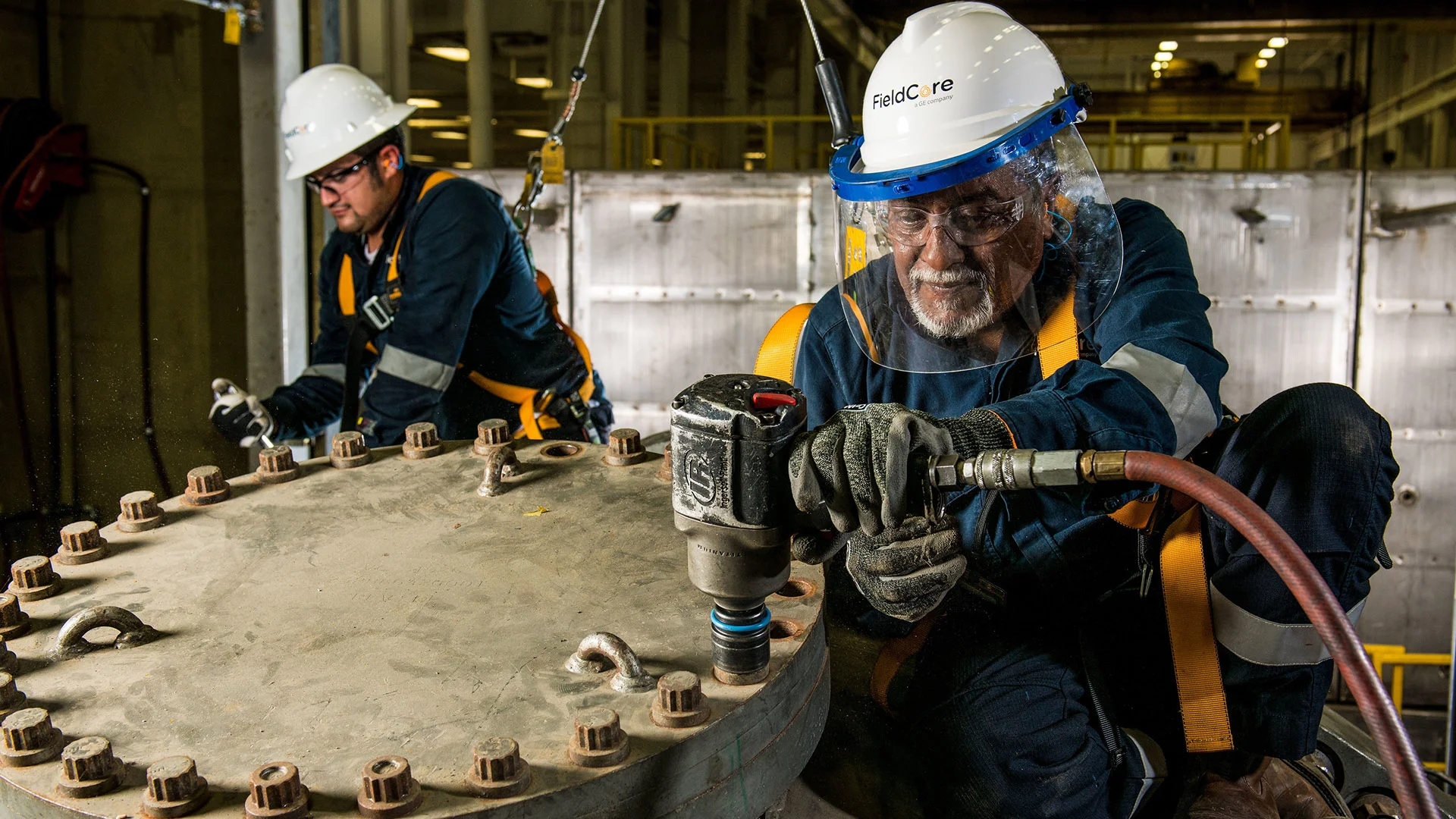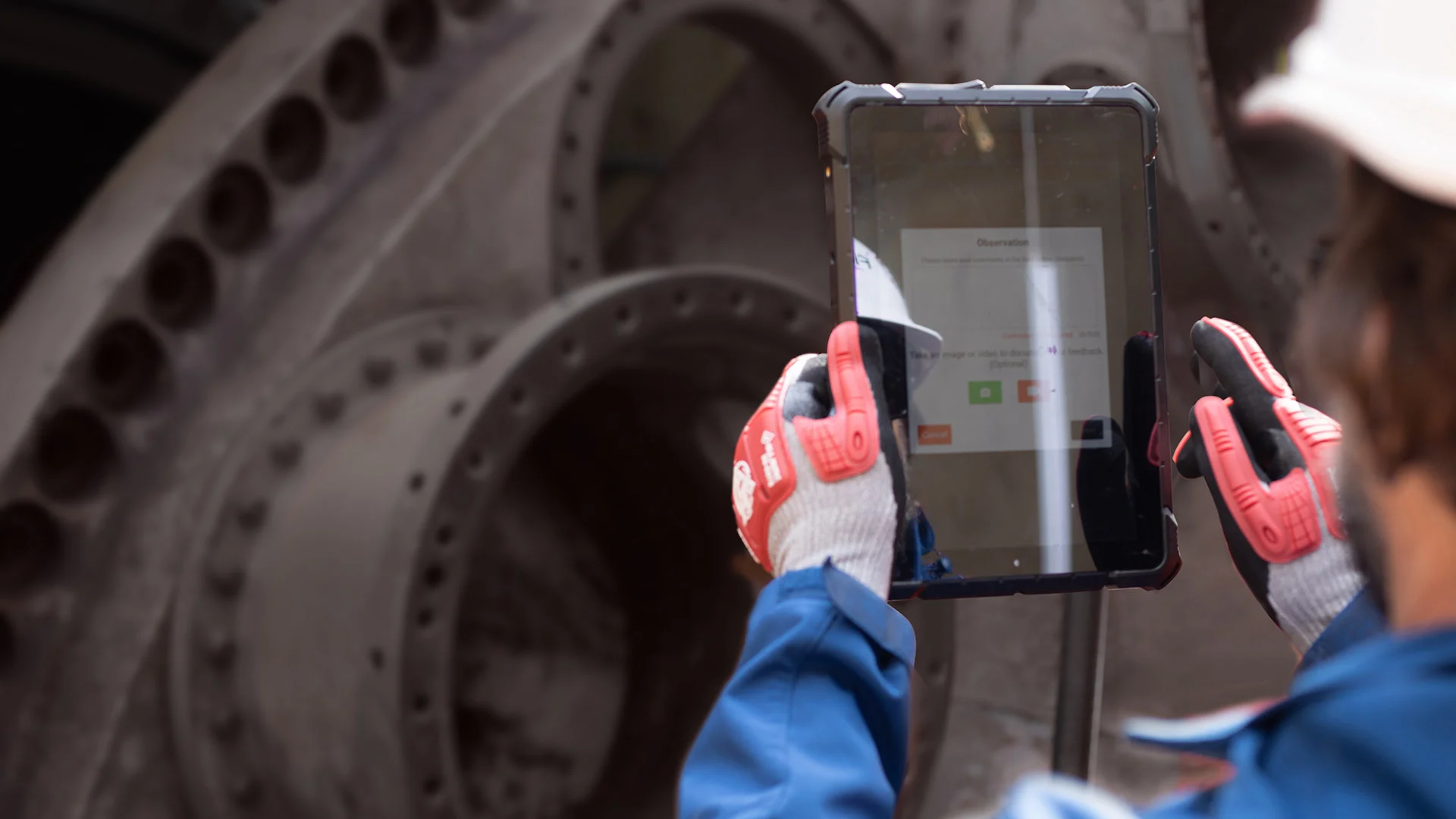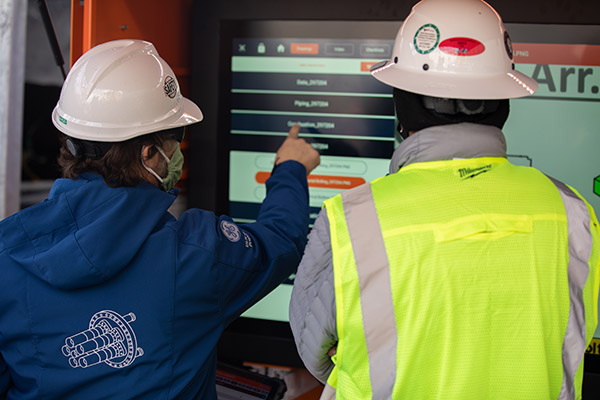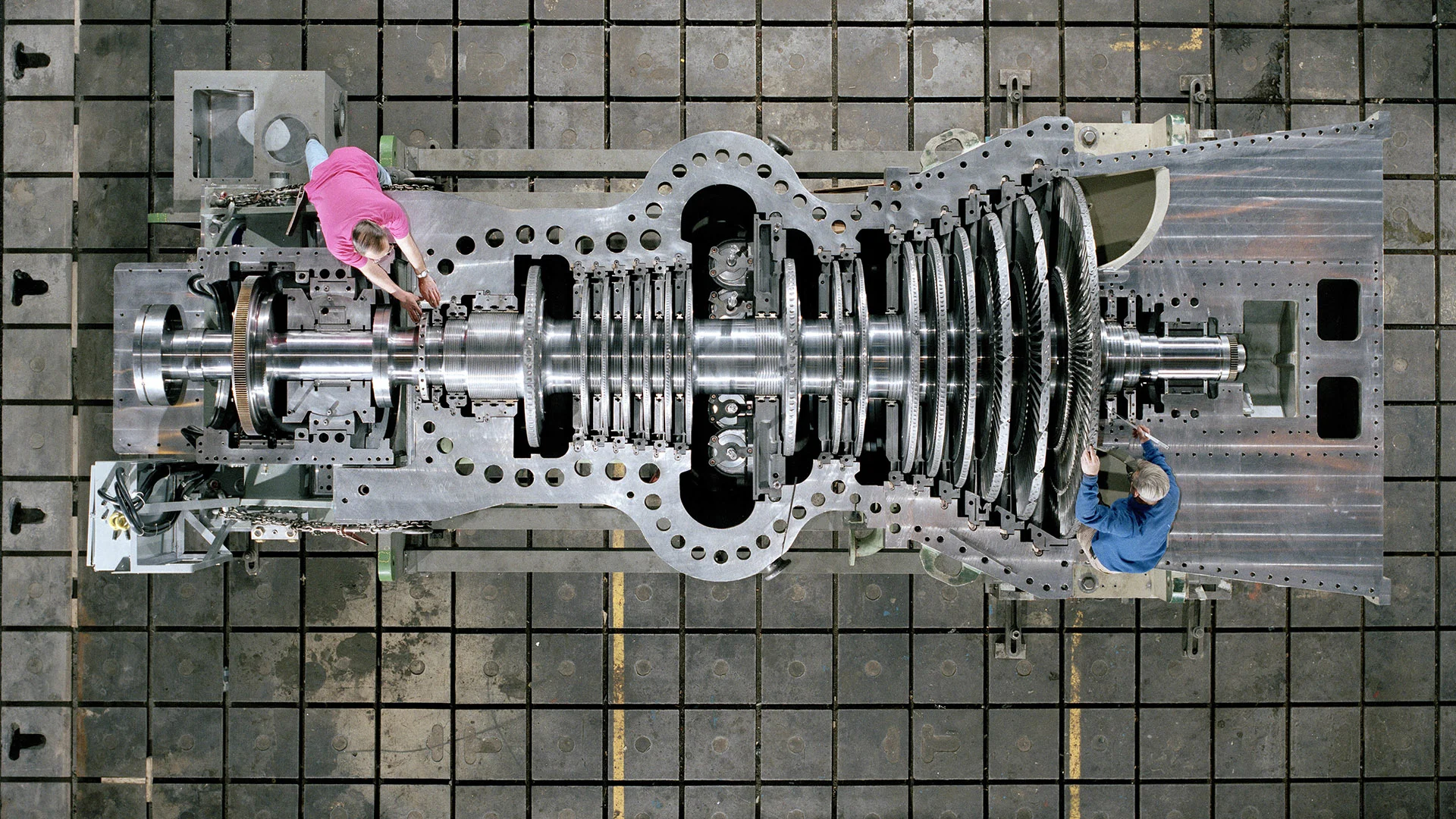Steam turbine outage services
Through our continual investment in local resource development, GE Vernova is well positioned to deliver outage services for steam turbines—including testing, onsite services and repairs—where and when you need them.
Our inspection and testing services can help prevent catastrophic high-speed rotor issues and future steam turbine outages. Critical to managing our global presence, GE Vernova has mastered the logistics necessary to maintain reliable supply chains, coordinate resources, and comply with regional regulations.
Boresonic inspection of older bored rotors looks for indications of deterioration from the inside to the outside.
Transporting turbine components off site for repair can increase your outage time by days or weeks, while the additional handling requirements can expose the equipment to risk of further damage. GE Vernova’s On-site Services (OSS) offers highly technical onsite inspections and premium repairs for global power generation customers through our EHS, quality, technical, and operational excellence.
We work hard to meet and exceed your expectations, on budget, every time. We bring the inspection and repairs directly to your location to help you reduce steam turbine outage time and achieve substantial cost-savings.
Comprehensive steam turbine services: We provide a full range of services—from typical inspections, repair and machining to highly specialized services offered by GE Vernova.
Extensive tooling: GE Vernova’s OSS is one of the largest onsite service organizations, with more than 500 pieces of portable equipment and an extensive tooling inventory.
Experience: Our team of qualified GE Vernova specialists includes machining supervisors, engineers and technicians with an average experience level of more than 20 years.
Global responsiveness: All equipment is completely mobile and can be transported to any required destination around the world within hours of notification.
Expert outage services
Whether planned or unplanned, power plant outages can disrupt operations and impact performance. But with GE Vernova’s extensive outage capabilities across gas, steam, and nuclear power, you can count on expert support to keep your assets running efficiently. From proactive maintenance and rapid response services to full-scope outage planning, our solutions help reduce downtime, enhance reliability, and optimize performance for your power generation needs.
Digital platform
Our new digital outage platform was developed along with experts from the field to improve the field execution experience for our customers. This new platform includes a weatherproof, touchscreen-based, digitized system that replaces a more antiquated, paper-based approach—which not only reduces the risk of mistakes or rework, it also speeds up the outage process for customers, helping them get back in business more quickly.
The digital platform is currently available on 9F/6F/7E/9E gas turbines, as well as generators and D11 steam turbines.
Parts to support your outage
Meeting our customers’ needs for parts in a timely manner is high priority for GE Vernova’s steam turbine services team. To that end, we have implemented a new inventory strategy that will help address supply chain issues and get your operations back up and running as quickly as possible.
Our inventory includes raw materials and finished goods for long-cycle parts (primarily D11 steam turbines).
We have up to $25 million in steam turbine parts available at all times—including front stage buckets/blades, HP/IP blades, L-O buckets and valve parts.
If you have emergent needs for a part we don’t currently have in inventory, we can work with you to support your short term operations while our team makes the necessary parts.
When planning your parts needs, we advise moving your parts spending to your capital improvement budget to help ensure you have the parts needed to improve or restore performance and reliability. Even if you don’t need every part we have, contact us to get a quote! That will help you understand your cycle time and allow time for appropriate budgeting.
Plan ahead
Start discussing the outage plan for all your major equipment with your local team, including your CSL, CPM, and account manager. Make sure everyone is aware of the upcoming outage and its potential dates.
Begin reviewing your operating data, outage reports, and fleet experience since the last major outage with a focus on any recommendations that were not executed previously. Understand your planned future operation to determine if the unit will be opened again in the near or distant future.
Look at the scope of the outage, assess the operating data, and understand the different solutions needed based on the unit’s future operation.
Identify and order long lead parts necessary for the outage. This period is crucial for mitigating supply chain challenges and ensuring parts are available when needed.
Finalize the scope of the outage. Determine what parts need to be upgraded or replaced and what parts will be repaired during the outage. Begin making commitments to service providers for known scopes.
Begin detailed planning around how the outage will be executed, including the use of cranes, labor pools, and other resources. Consider the primary goals of the outage, whether it’s minimizing duration or managing costs.
If you have multiple units of the same design, strategize on maximizing part purchases to cover as many units as possible and consider refurbishment plans for shared parts.
Decide what parts stay on site and what parts need to go to a repair facility. Plan logistics, including shipping large parts, permits, and special transportation needs.
Make sure all teams are prepared and trained. Site tooling should be inspected, calibrated, tested, and ready for the outage. Ensure all other resources are staged and ready.
Develop contingency plans for potential findings and issues that may arise during the outage. Assess potential problems that could affect the outage's critical path and plan accordingly.
Plan for potential costs and budget impacts of the outage, and make sure that management is aware of any additional costs that may be incurred.
Consider having additional parts on site, even those not typically kept as spares, to address unexpected issues quickly and efficiently.
Ensure that everyone involved in the planning is aligned on the scope, parts, and execution plan. Continuous communication and updates are crucial to avoid last-minute surprises.
Execute the outage plan, managing resources, timelines, and contingencies effectively to achieve an uneventful outage.
Explore
Start outage planning 18 to 24 months in advance for to account for a thorough scope and preparation. Optimal outage duration varies based on the specific needs, but as a general guideline, planning for an open, clean, inspect, and close cycle typically falls in the range of 25-45 days.
Keeping an outage within schedule requires early identification of findings, attention to high-risk areas, and detailed contingency planning. Ensuring tooling availability, addressing potential delays, and having fallback plans can help keep an outage on schedule.
In addition, market-driven demands for shorter outage durations pose challenges. Efficient management involves planning for contingencies, developing what-if scenarios, and addressing unexpected events promptly. Adaptability is crucial for successful outage management.
Live Outage has been rolled out for the D11 fleet and we have successfully reduced cycles by approximately 20% and improved outage completion time by 10%. If you have a D11 outage coming up, connect with local representatives for insights into the Live Outage concept and its advantages.
Efficiently manage cleaning and repair phases, triage findings based on urgency, and promptly address identified risks for designing planning margin. This helps ensure flexibility and adaptability during steam turbine outages.
Contact us
